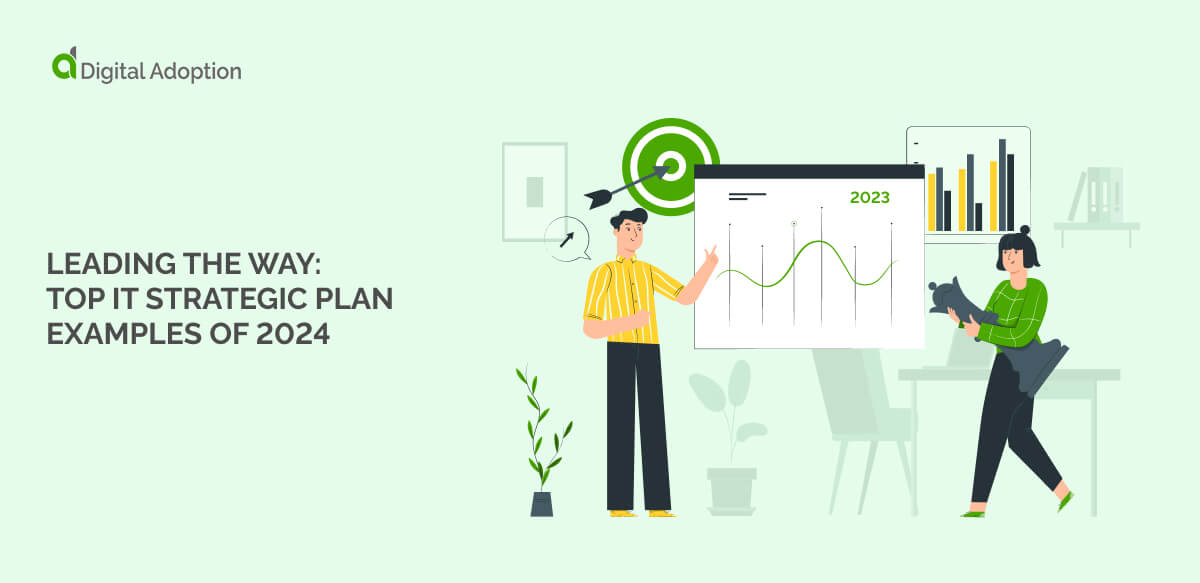This article will discuss the different phases of strategic IT planning and how software tools can support IT innovation and modernization. The ultimate goal is to decrease costs and achieve strategic outcomes.
If you’re looking for the best examples of IT strategic planning, you’ve come to the right place.
What is an IT Strategic Plan?
An IT strategic plan is a structured and well-defined document outlining an organization’s goals for using technology over 3-5 years. It encapsulates the overall vision, mission, and objectives of the company’s IT department in alignment with the organization’s business objectives. The strategic plan provides a roadmap for achieving those goals by outlining the strategies and tactics required to support them.
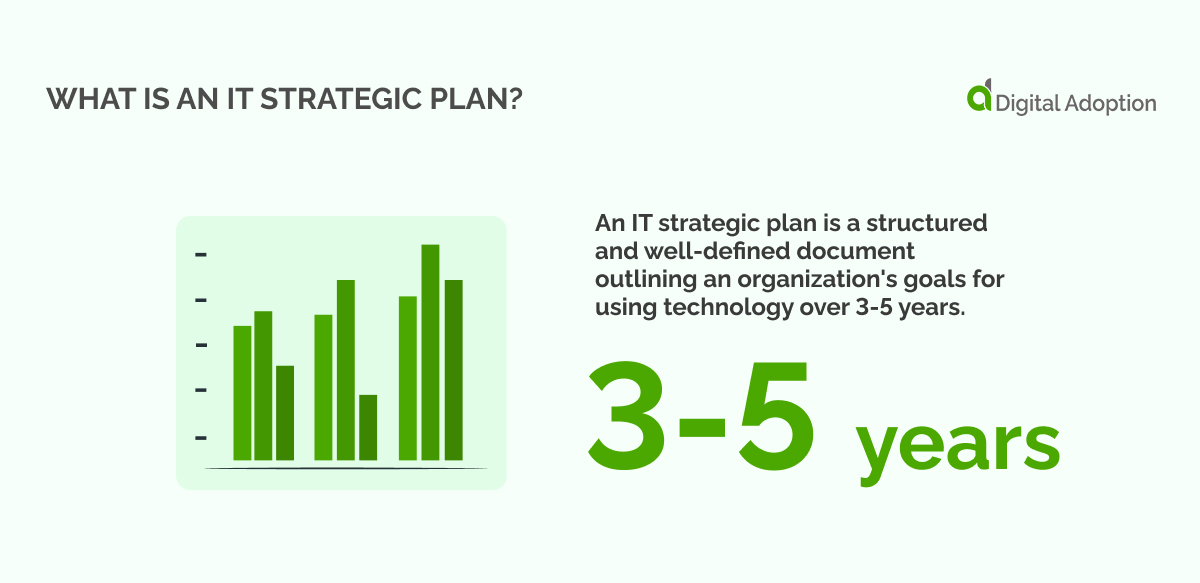
It includes a detailed analysis of the current technological landscape, the strengths and weaknesses of existing systems, and the market’s opportunities and threats. By creating an IT strategic plan, organizations can ensure that their technology infrastructure is optimized to support their overall business objectives while being prepared for any challenges.
IT Strategic Plan vs. IT Strategy
While the terms “IT strategic plan” and “IT strategy” are often used interchangeably, they differ. An IT strategy refers to the overall approach taken by an organization to manage its technology resources, while an IT strategic plan defines the processes and steps that should be taken to achieve the desired outcome.
The IT strategy outlines the vision, objectives, and goals of the organization’s technology efforts, while the IT strategic plan provides a roadmap for achieving those goals by outlining specific initiatives and activities to be undertaken. An IT strategic plan also focuses on short-term actions leading to long-term success in achieving the organization’s goals.
Why Do We Need IT Strategic Planning?
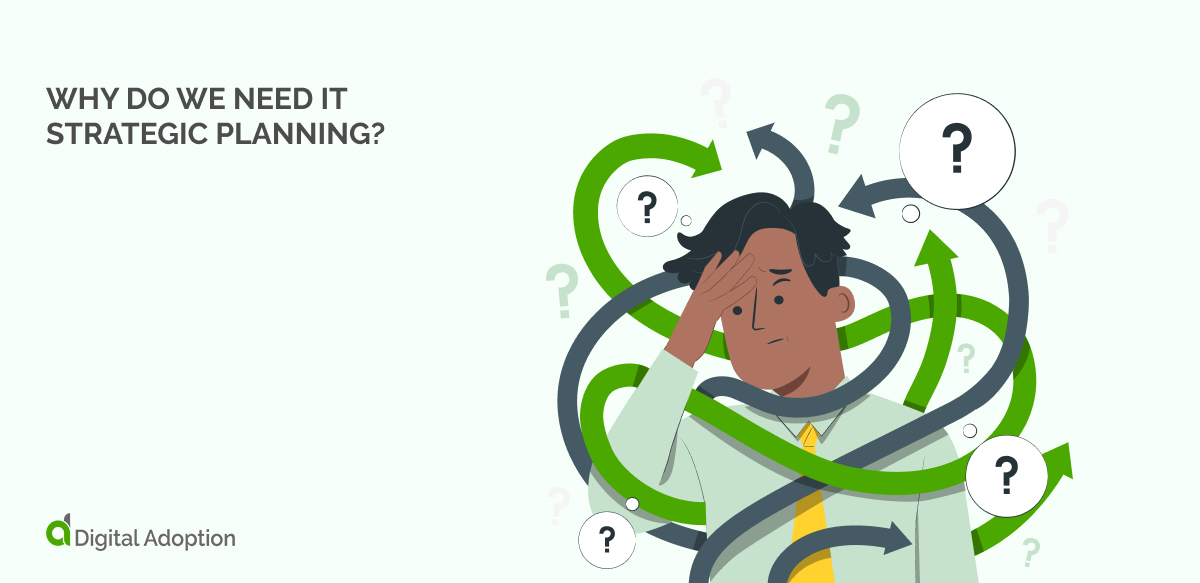
IT strategic planning is essential for any organization that wants to stay competitive in the digital age. Without a well-structured plan, organizations risk wasting time, money, and resources on ineffective technology solutions that will not contribute to the organization’s growth.
In these uncertain times of COVID-19, the pace of technological disruption has skyrocketed. Remote work and digital selling have become essential, leaving many organizations scrambling to keep up. However, those with a well-crafted IT strategic plan could easily adapt and manage new IT changes efficiently.
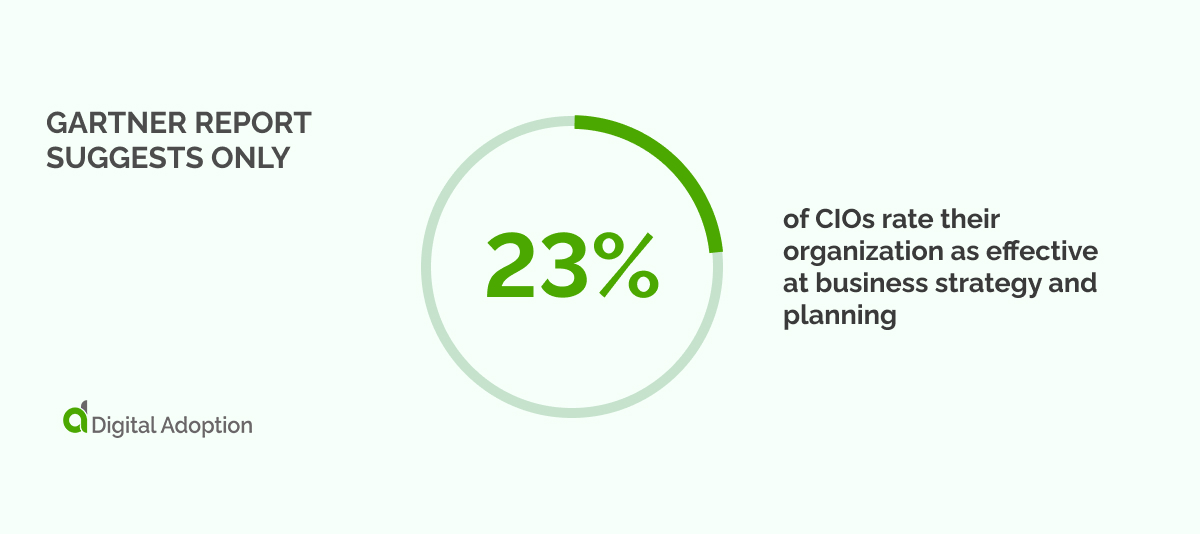
The need for a solid IT strategic planning process has never been more crucial, as it can be the difference between success and failure in a rapidly changing business landscape. A recent Gartner report suggests only 23% of CIOs rate their organization as effective at business strategy and planning. Fortune 500 companies prioritizing IT strategic planning have reported returns of up to 700%.
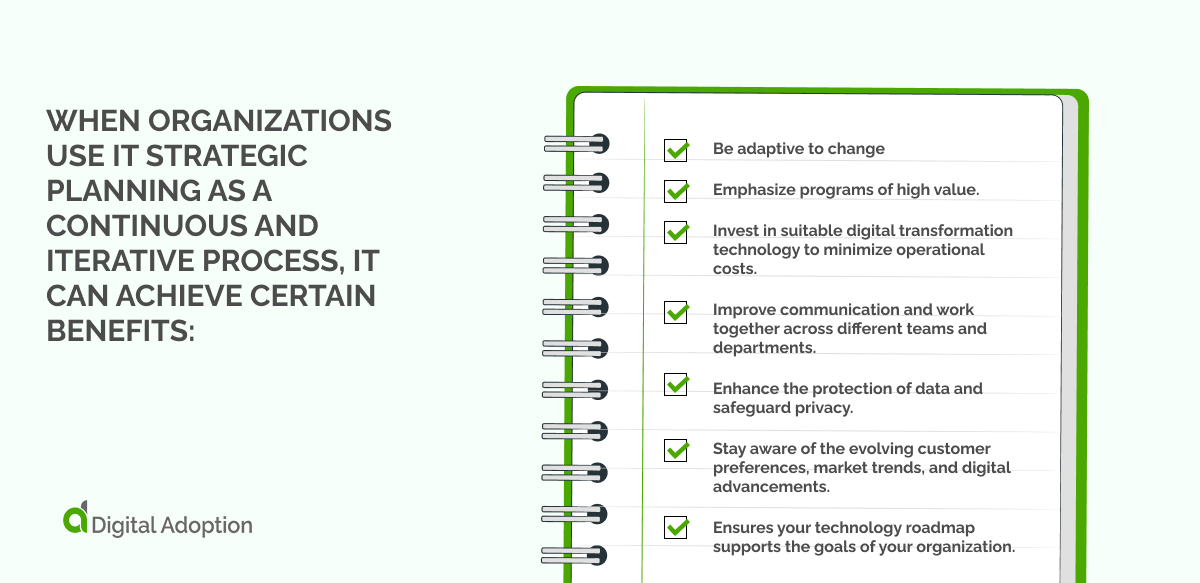
When organizations use IT strategic planning as a continuous and iterative process, it can achieve certain benefits:
- Be adaptive to change
- Emphasize programs of high value.
- Invest in suitable digital transformation technology to minimize operational costs.
- Improve communication and work together across different teams and departments.
- Enhance the protection of data and safeguard privacy.
- Stay aware of the evolving customer preferences, market trends, and digital advancements.
- Ensures your technology roadmap supports the goals of your organization.
IT Strategic Plan: Key Components
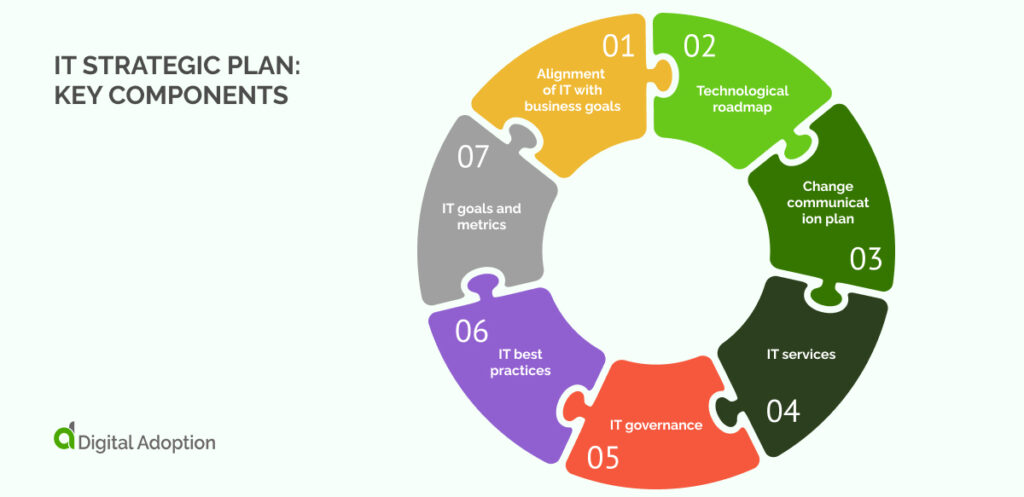
For a successful IT strategic plan, it’s important to consider each organization’s unique business needs and requirements. The following core components can serve as the foundation:
Sure, here is an expanded version of the content:
Alignment of IT with business goals:
IT alignment with overall business goals is essential for effective IT strategic planning. It ensures that every IT initiative supports the company’s vision and mission. IT leaders must know how to prioritize IT infrastructure requests, digital transformation projects, and organizational change management strategies. This means they must understand how each project aligns with the business goals and decide on investment priorities based on their significance.
Technological roadmap:
A technological roadmap is critical to IT strategic planning as it outlines the long-term IT initiatives, requirements, and impact of technology implementation. The roadmap also includes a detailed technology adoption plan that provides clarity and direction to IT teams. For instance, due to their flexibility, scalability, and security, many organizations have migrated to cloud services such as AWS and Microsoft Azure from legacy (and outdated) on-premise data centers. Such transitions require cloud change management for successful implementation. A technological roadmap makes this process more efficient and organized.
Change communication plan:
Change is inevitable in any organization, but it is often met with resistance from employees. A transparent and detailed change communication plan helps onboard team members and drive the adoption of new IT technologies. The communication plan should include the reason for the change, its benefits, and how it will impact employees. It should also provide clear instructions on how employees can adapt to the change and receive support if needed. Engaging employees in the change process leads to better outcomes and acceptance.
IT services:
Standardizing the IT services offered within an organization is essential for effective IT strategic planning. It bridges the gap between the existing and required services, leading to efficiency and reducing the risk of downtime. Standardization enables IT teams to deliver services and solutions faster, reduces the cost of maintaining and supporting them, and improves the quality of services provided to end-users. IT leaders must evaluate and prioritize digital initiatives and identify areas of improvement to ensure that they align with business goals and strategies.
IT governance:
IT governance is a subset of corporate compliance that ensures efficient and effective use of IT within the organization. It includes cybersecurity and data protection policies, critical for hybrid and remote work with employees from various regions. IT governance policies ensure that IT initiatives are aligned with business goals, risks are managed effectively, controls are in place to protect sensitive information, and compliance requirements are met. A robust IT governance strategy enables companies to operate safely and securely while achieving their objectives.
IT best practices:
Adherence to IT best practices ensures lower risks, reduced costs, and improved SLAs. IT organizations establish best practices over a long period based on industry standards, experience, and organizational needs. Adherence to these practices ensures that IT teams are consistent in their approach, which leads to better outcomes. Deciding on these best practices is continuous and must be updated regularly for relevance and improvement.
IT goals and metrics:
Clear IT goals and metrics enable IT teams to measure their performance, track progress, and deliver results timely. IT leaders must define the goals and KPIs in their IT strategic plan based on SMART criteria (Specific, Measurable, Achievable, Relevant, Time-bound). The metrics should align with business goals and provide insights into IT performance. Well-structured IT metrics, KPIs, and goals allow team members to better plan for ad-hoc requests and deliver timely results.
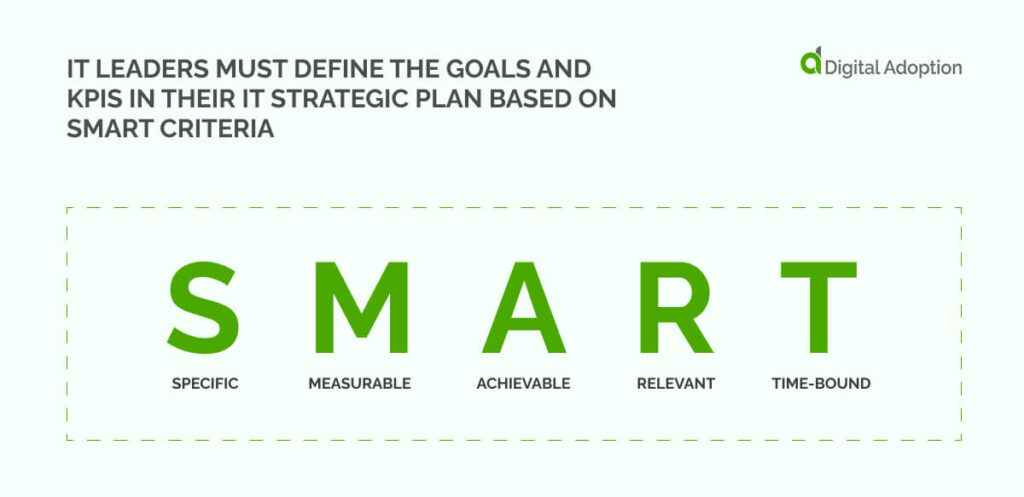
IT Strategy Plan Example

We’ve outlined a sample IT strategic plan for a fictional organization, ABC Technologies.
Objective: To develop an IT infrastructure that can sustain the rapid growth of ABC Technologies and meet the changing needs of its customers.
Goals:
- Establish secure cloud services to protect customer data
- Improve user experience with faster delivery times and more reliable services
- Implement automated processes to increase operational efficiency
- Adopt robust change procedures to ensure a smooth transition of new IT initiatives
- Create comprehensive governance structures to protect customer data & manage IT resources
Metrics:
- Number of cloud services deployed within the specified time frame
- Reduction in time taken for customer service requests
- Number of automated processes implemented
- Success rate of change management initiatives
- Compliance with data protection regulations
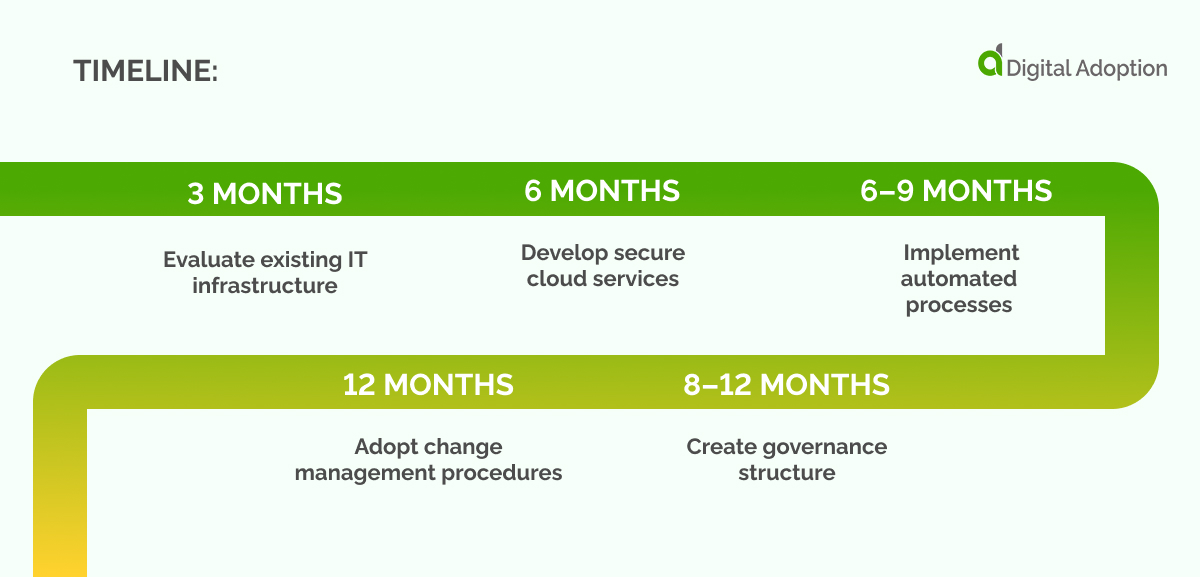
Timeline:
- Evaluate existing IT infrastructure: 3 months
- Develop secure cloud services: 6 months
- Implement automated processes: 6–9 months
- Create governance structure: 8–12 months
- Adopt change management procedures: 12 months
Budget:
- Cloud services and infrastructure: $150,000
- Automated processes and tools: $50,000
- Governance structure and training: $75,000
- Change management procedures: $25,000
Actions:
- Evaluate existing IT infrastructure and create a roadmap for improvement
- Develop secure cloud services to protect customer data
- Implement automated processes to reduce manual effort and increase efficiency
- Develop a comprehensive governance structure to protect customer data and IT resources
- Adopt robust change management procedures to ensure a smooth transition of new IT initiatives
The above example is a basic outline of an IT strategic plan. Gartner also has an IT strategy and planning framework that can be used to develop detailed plans. The framework covers all the essential components of an IT strategic plan backed by the industry’s best practices.
Depending on the organization’s needs, the objectives, goals, metrics, and actions can be refined and improved to ensure they align with business goals and strategies. Organizations can plan their IT initiatives more efficiently and effectively by establishing a clear system and using it as a reference.
By creating a comprehensive IT strategy plan and adhering to best practices, organizations can ensure that their IT initiatives are aligned with their business goals and deliver the desired results. The program should be updated regularly based on changes in customer needs, technology advances, or organizational objectives.
The 5 Phases of the IT Strategic Planning Process
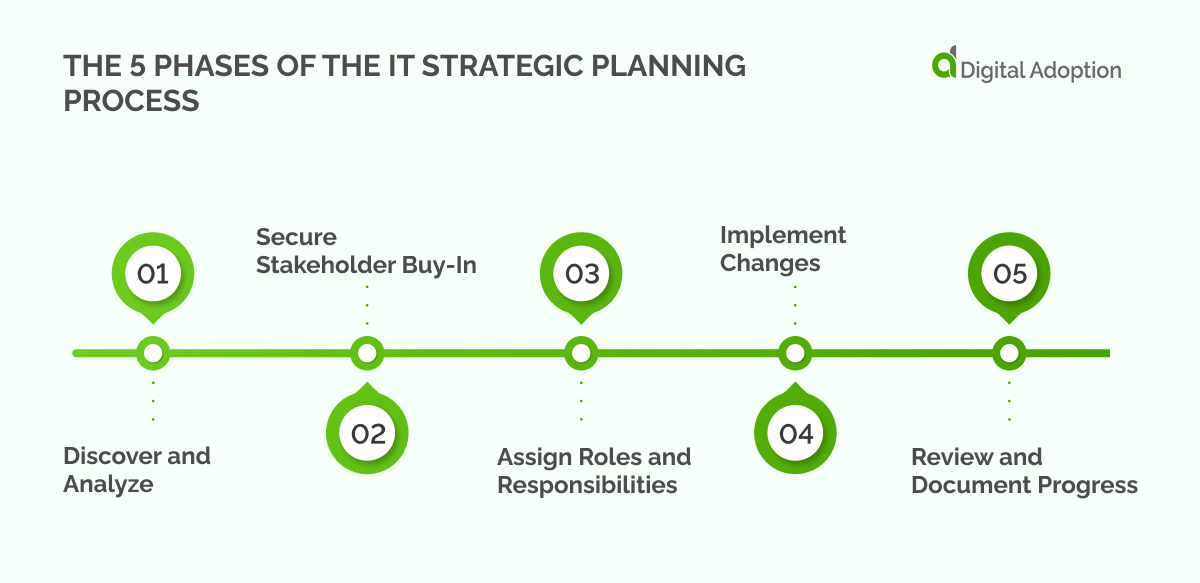
The process of IT strategic planning primarily consists of five phases:
- Discover and Analyze: Analyzing business processes is the first step toward identifying inefficiencies. To do so, use employee surveys, focus groups, and industry best practices to assess challenges and opportunities. Leverage data from external sources such as customers and partner agencies to gain actionable insights into the effectiveness of your current processes.
- Secure Stakeholder Buy-In: Gaining stakeholder buy-in is crucial for successful change implementation. Involve key stakeholders in the planning process and show them that the project has support from leadership. Consider hiring external consultants to provide objective insights and expertise based on the project’s scope.
- Assign Roles and Responsibilities: Create a detailed project charter outlining the scope, roles, and responsibilities. Use the RACI matrix to clearly define roles and increase employee accountability. Ensure that every team member understands their responsibilities and how they contribute to the project’s success.
- Implement Changes: The implementation phase is where the rubber meets the road. Outline the budget, deliverables, and timelines for the project. Prioritize long-term and medium-term IT goals and objectives to create a strategic roadmap that connects strategy with outcomes. Be flexible and adaptable to external factors that may sway timelines.
- Review and Document Progress: Regularly review the progress of your IT change plan and document it for future reference. Not all changes will be successful in one cycle, and much can change over 3-5 years. Therefore, it’s essential to have a review process in place to ensure continuous improvement and success.
Revamping your business processes and implementing IT changes requires a comprehensive plan and a collaborative approach. These five essential steps can streamline your business processes and enhance workflow, leading to greater efficiency, productivity, and profitability.
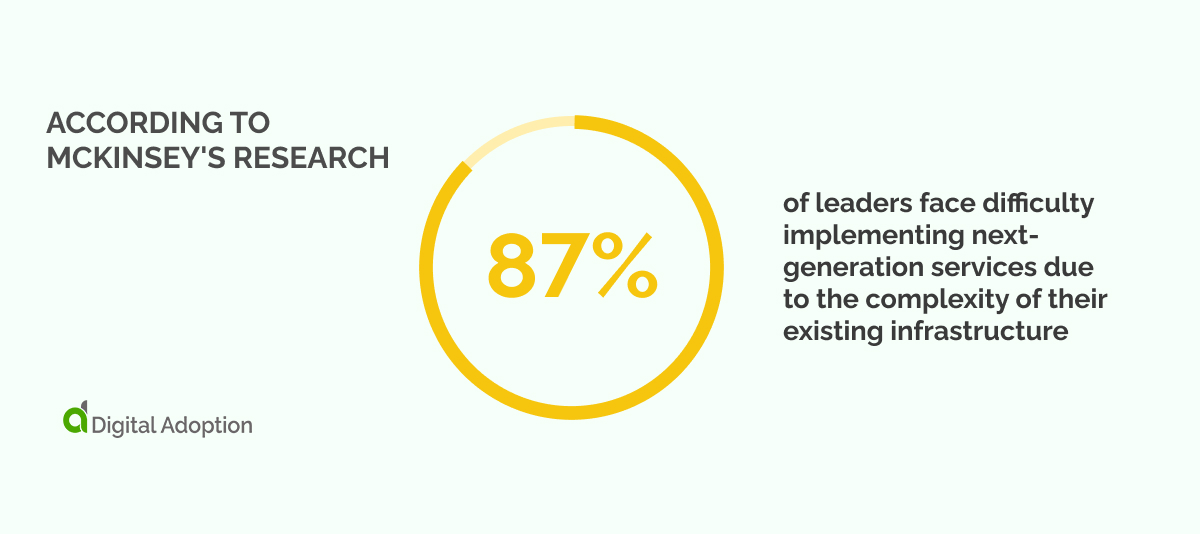
According to McKinsey’s research, 87% of leaders face difficulty implementing next-generation services due to the complexity of their existing infrastructure. For this reason, CIOs need IT strategic planning to make their outdated systems more efficient and uncomplicated.
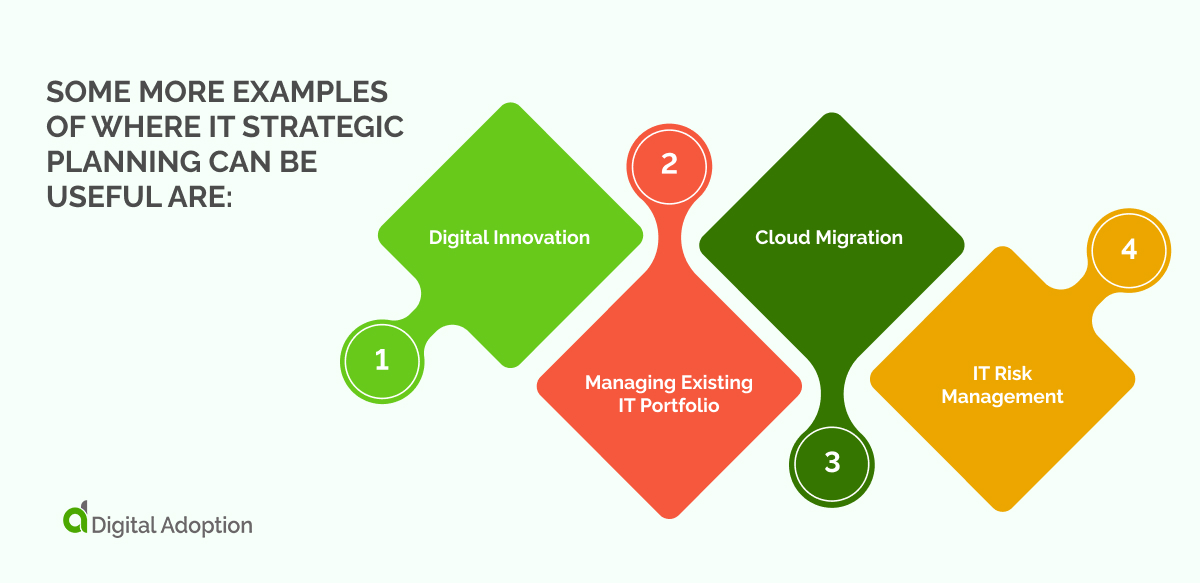
Some more examples of where IT strategic planning can be useful are:
Digital Innovation: Collaborating with internal and external stakeholders to develop innovative solutions that prioritize high-value strategies for digital innovation initiatives, such as switching from offline to digital processes, implementing new software and platforms, developing new technologies, and leveraging automation, IoT connectivity, and big-data analytics.
Managing Existing IT Portfolio: Conducting regular evaluations and redirecting funds to high-priority projects helps control costs while driving innovation forward.
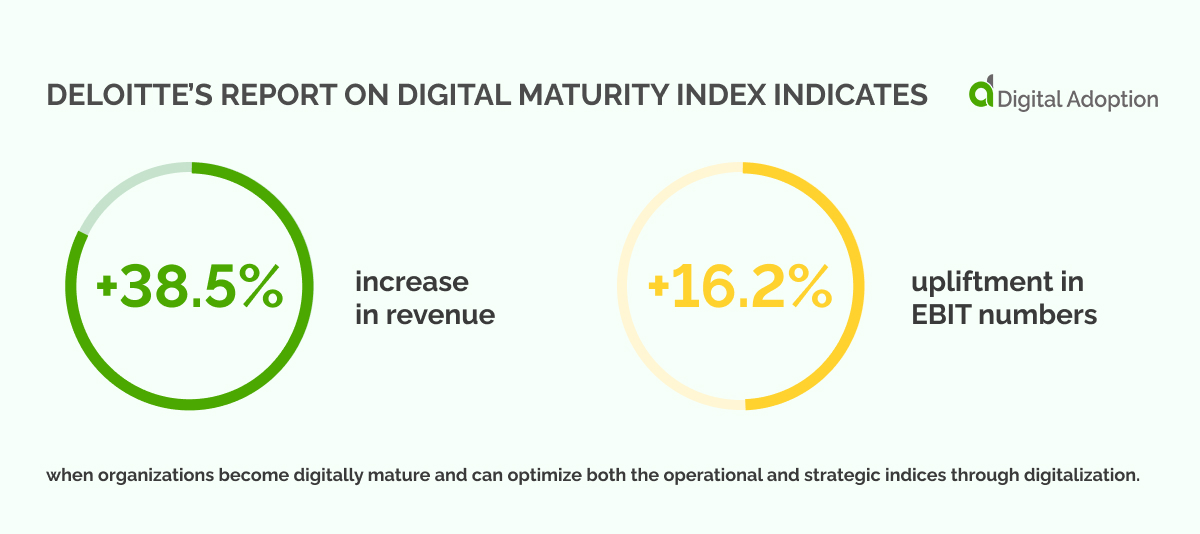
Digital Transformation: Progressing on the digital maturity index through strategic planning can help businesses adapt to digital transformation and increase revenue and EBIT numbers. Deloitte’s report on Digital Maturity Index indicates a 38.5% increase in revenue and a 16.2 % upliftment in EBIT numbers when organizations become digitally mature and can optimize both the operational and strategic indices through digitalization.
Cloud Migration: Developing a clear plan for identifying suitable cloud solutions and developing a migration roadmap can improve agility and responsiveness to changing business needs while reducing IT infrastructure costs. Additionally, cloud-based services and tools can enhance operations, support growth, and provide a competitive edge in the market.
IT Risk Management: Identifying, assessing, and mitigating IT risks that may threaten operations is essential for enhancing cybersecurity and ensuring business continuity in the face of potential disruptions. Businesses can thrive in the digital age by protecting critical assets, maintaining compliance with industry regulations, and preserving customer trust.
IT strategic planning is crucial for businesses seeking to stay competitive in the digital landscape. By prioritizing innovation, managing existing IT portfolios, embracing digital transformation, migrating to the cloud, and mitigating IT risks, organizations can navigate the challenges of the digital age and thrive in today’s constantly evolving market.
The 7 Best IT Strategic Planning Software Solutions for Businesses
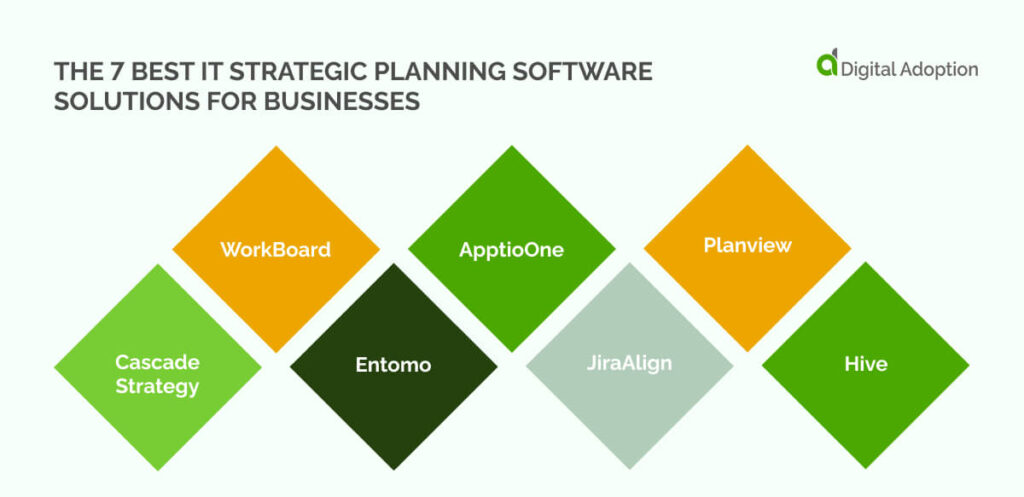
As businesses continue to rely on technology for growth, IT strategic planning becomes more crucial than ever.
If you’re feeling overwhelmed by managing your IT strategy plans effectively, don’t worry; several top-rated software tools are available to make your life easier.
1. Cascade Strategy
First up is Cascade Strategy. This all-in-one platform is designed to streamline IT planning, execution, reporting, and people management. With customizable strategic plans, IT goal and KPI management, project performance tracking, and human capital management, Cascade Strategy is the ultimate choice for all your IT planning needs. Whether a small team or a large enterprise, this software can help you achieve your goals efficiently and effectively.
2. WorkBoard
Next on the list is WorkBoard. This enterprise strategy and result management solution fosters collaboration and accountability through clearly defined objectives, key results (OKRs), and project tracking. This software helps teams prioritize their goals, align their efforts, and track their progress toward success. With WorkBoard, everyone can stay aligned and focused on the most important tasks.
3. Entomo
Another option worth considering is Entomo’s performance management software. This tool helps organizations align goals and manage remote teams with skill gap analysis, task management, learning recommendations, and augmented analytics. Whether you’re working with a distributed team or simply need help managing your organization’s performance, Entomo has you covered.
4. ApptioOne
If you’re looking to lower your IT expenditure and accelerate forecasting cycles, ApptioOne may be the right choice for you. This software enables the creation of unified models by combining financial and operational data based on industry-standard taxonomy. With ApptioOne, you can gain greater visibility into your IT expenses and make more informed decisions about where to invest your resources.
5. JiraAlign
Jira Align is another software tool to help align IT initiatives with business strategy. This agile planning platform provides teams with agile boards, roadmaps, and dashboards to help them stay on track and deliver results. Whether working with an in-house team or a distributed group of contractors, Jira Align can help you achieve your goals more efficiently.
6. Planview
Planview is another comprehensive project and portfolio management software that can assist IT teams in aligning their activities with business strategy. This tool helps businesses manage timelines, budgets, and resources to prioritize projects and ensure they deliver value to the organization.
7. Hive
Finally, there’s Hive, a project management tool that streamlines the planning process, monitors progress, and ensures everyone is aligned with the strategic goals through centralized workspaces and task management features. This software allows team members to collaborate on projects, track their progress, and communicate more effectively. With Hive, you can take the pain out of project management and stay focused on what matters most – delivering results.
Whether you’re looking for a comprehensive management suite, an agile planning platform, or a simple project management tool, there’s something on this list for everyone. Choose the best tool for your IT strategic planning needs and take your business to new heights.
Drive IT Modernization and Transformational Change
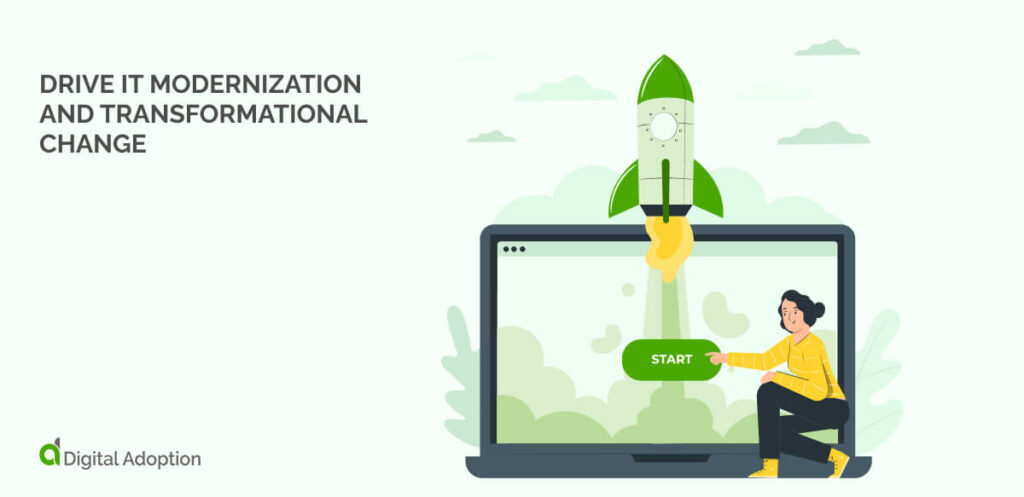
To drive digital transformation effectively, organizations should find suitable implementation partners who can aid in IT strategic planning and IT change management. Utilizing a digital adoption platform can improve the robustness of your IT strategy.
By optimizing user experience and leveraging usage analytics, your organization can quickly assess the effectiveness of new initiatives and ensure that IT projects are geared toward creating value.
Moreover, a digital adoption platform can also speed up modernizing an organization’s IT landscape. Using this tool, companies can easily roll out new applications and systems and identify gaps in existing processes. You can even use automated deployment tools to reduce manual tasks related to implementing these technologies.
A comprehensive solution for IT strategic planning should include measures to continuously monitor performance metrics, measure cost efficiency, and drive innovative solutions through automation. As organizations scale their operations and explore more advanced technology options – such as artificial intelligence (AI) or the Internet of Things (IoT) – they should incorporate data lifecycle management tools, business process automation, and advanced analytics into their IT strategic planning.

